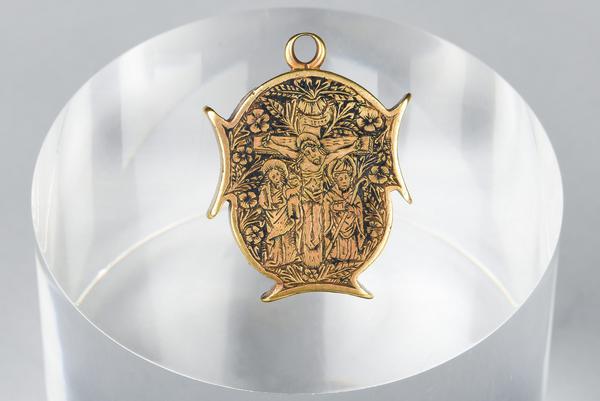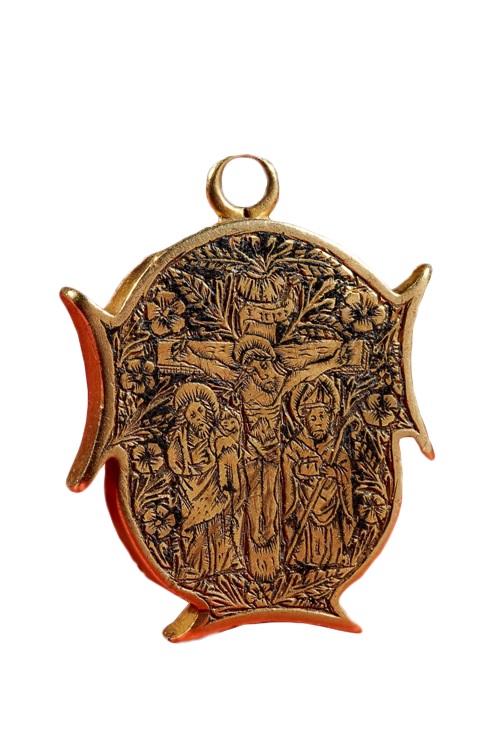reliquary pendant
Accession Number NWHCM : 1894.76.342
Description
Cross, reliquary, Medieval, 15th century; gold reliquary pendant in the shape of the Tau-Cross (which is associated with the Order of St Antoine de Viennois), so called because the pendant is hollow to hold a precious relic, with its surface decorated with black enamel and the engraved figures of Christ on the cross, St John the Baptist and a bishop at the foot of the cross, all set against a background of delicately engraved leaves and flowers, while the rivet holes in the edges show how the back plate would have been attached; found at Matlask, Norfolk
Read Morereliquary pendant
Throughout the medieval period religious objects were collected, based on the belief that such relics held holy power. Containers in various forms were designed to accommodate such sacred relics, and were often exquisitely decorated and used precious materials. The reliquary discovered at Matlask is a magnificently decorated example, constructed in the form of a pendant.
This is an interesting example in a variety of ways. The overall shaped is based on the Tau Cross, a form of Christian cross which is named after the Greek letter it resembles. The intricate depiction shows the central figure of the crucified Christ flanked, on the left, by St John the Baptist holding a lamb and, on the right, by an unidentified bishop-saint – possibly St Nicholas. The figures are surrounded by a setting of leaves and flowers - the whole engraving highlighted by the use of black niello. The gold pendant is hollow, but rivet holes on the edges indicate how a back plate would once have been attached, enabling the pendant to contain a relic.
Possession of such reliquaries was not only an expression of personal devotion but also a protection against sickness. The Tau Cross was often associated with St Anthony who was patron saint of the Order of Hospitallers of Saint-Antoine-de-Viennois. His protection was often sought by those suffering from a disease known as ‘St Anthony’s Fire’. Properly called ergotism, this was a common ailment in the medieval period, associated with bread made from contaminated flour. Reflecting all the uncertainties of medieval life, one can hardly imagine the anguish its owner must have felt when the pendant was lost.










